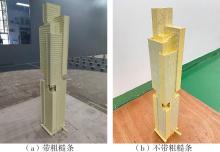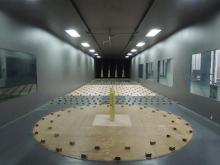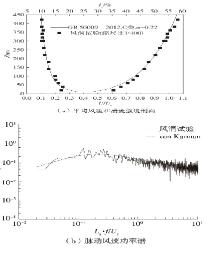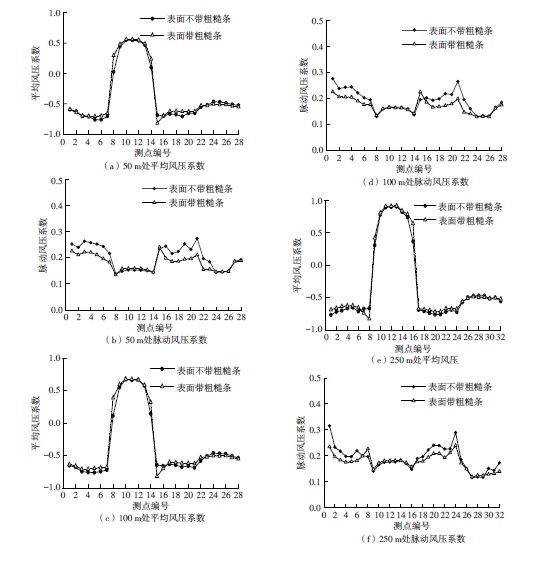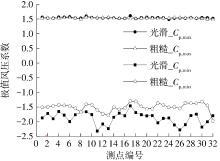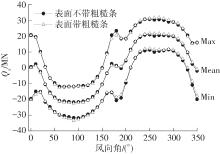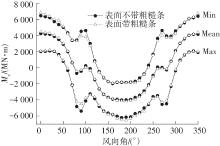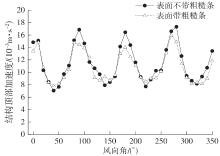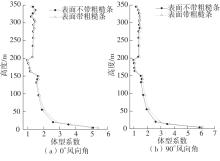| 1 |
建筑结构荷载规范: [S].
|
| 2 |
JAFARI M, ALIPOUR A .Aerodynamic shape optimization of rectangular and elliptical double-skin facades to mitigate wind-induced effects on tall buildings[J].Journal of Wind Engineering and Industrial Aerodynamics,2021,213:104586.
|
| 3 |
杨肖悦,秦玮峰,柯延宇,等 .镂空双层幕墙对高层建筑结构风响应的影响[J].哈尔滨工业大学学报,2021,53(10):70-78.
|
|
YANG Xiaoyue, QIN Weifeng, KE Yanyu,et al .Effects of porous double skin façade system on structural wind responses of tall buildings[J].Journal of Harbin Institute of Technology,2021,53(10):70-78.
|
| 4 |
邹云峰,陈政清,牛华伟 .模型表面粗糙度对冷却塔风致响应及干扰的影响[J].空气动力学学报,2014,32(3):388-394.
|
|
ZOU Yunfeng, CHEN Zhengqing, NIU Huawei .Influence of model surface roughness on wind induced response and interference of cooling tower[J].Acta Aerodynamica Sinica,2014,32(3):388-394.
|
| 5 |
黄东梅,何世青,朱学,等 .表面粗糙度对超高层建筑风荷载与风振响应的影响[J].湖南大学学报(自然科学版),2017,44(9):41-51.
|
|
HUANG Dongmei, HE Shiqing, ZHU Xue,et al .Influence of surface roughness on wind load and wind induced response of super-tall building[J].Journal of Hunan University(Natural Science),2017,44(9):41-51.
|
| 6 |
STATHOPOULOS T, ZHU X .Wind Pressures on buildings with mullions[J].Journal of Structural Engineering,1990,116(8):2272-2291.
|
| 7 |
QUAN Y, HOU F, GU M .Effects of vertical ribs protruding from facades on the wind loads of super high-rise buildings[J].Wind and Structures,2017,24(2):145-169.
|
| 8 |
王磊,梁枢果,王泽康,等 .超高层建筑横风向风振局部气动外形优化[J].浙江大学学报(工学版),2016,50(7):1239-1246,1265.
|
|
WANG Lei, LIANG Shu-guo, WANG Ze-kang,et al .Effect of aerodynamic optimization to across-wind response of super tall buildings[J].Journal of Zhejiang University(Engineering Science),2016,50(7):1239-1246,1265.
|
| 9 |
YUAN K, HUI Y, CHEN Z Q .Effects of façade appurtenances on the local pressure of high-rise building[J].Journal of Wind Engineering and Industrial Aerodynamic,2018,178:26-37.
|
| 10 |
全涌,邱宏浩,张正维,等 .高层建筑水平悬挑遮阳板风荷载的风洞试验研究[J].建筑结构学报,2022,43(3):92-97.
|
|
QUAN Yong, QIU Honghao, ZHANG Zhengwei,et al .Wind test study on wind load of overhanging horizontal sunshade of high-rise buildings[J].Journal of Building Structures,2022,43(3):92-97.
|
| 11 |
MARUTA E, KANDA M, SATO J .Effects on surface roughness for wind pressure on glass and cladding of buildings[J].Journal of Wind Engineering and Industrial Aerodynamics,1998,74/75/76:651-663.
|
| 12 |
MONTAZERI H, BLOCKEN B .CFD simulation of wind induced pressure coefficients on buildings with and without balconies:validation and sensitivity analysis[J].Building and Environment,2013,60:137-149.
|
| 13 |
CHAND I, BHARGAVA P K, KRISHAK N L V .Effect of balconies on ventilation inducing aeromotive force on low-rise buildings[J].Building and Environment,1998,33(6):385-396.
|
| 14 |
ZHENG X, MONTAZERI H, BLOCKEN B .CFD analysis of the impact of geometrical characteristics of building balconies on near-façade wind flow and surface pressure[J].Building and Environment,2021,200:107904.
|
| 15 |
徐宗凯 .基于壁面带阳台的不同体型高层建筑风致响应研究[D].哈尔滨:哈尔滨工业大学,2019.
|
| 16 |
艾辉林,周志勇 .超高层建筑外表面复杂装饰条的风荷载特性研究[J].工程力学,2016,33(8):141-149.
|
|
AI Huilin, ZHOU Zhiyong .Research on wind load characteristics of complex decorative strips on the outer surface of high-rise building[J].Engineering Mechanics,2016,33(8):141-149.
|
| 17 |
艾辉林,周志勇 .一类复杂建筑外围装饰结构的风荷载参数研究[J].力学季刊,2014,35(3):513-521.
|
|
AI Huilin, ZHOU Zhiyong .Wind Load Parameters Research about Class of Complex Peripheral Decorative Structure[J].Chinese Quarterly of Mechanics,2014,35(3):513-521.
|
| 18 |
张正维 .高层建筑立面装饰构件设计风荷载探讨[J].建筑结构,2019,49(22):46-52.
|
|
ZHANG Zhengwei .Discussion on design wind load of facade decorative fittings for high-rise buildings[J].Building Structure,2019,49(22):46-52.
|
| 19 |
严志威,全涌,涂楠坤,等 .外附网架对高层建筑立面围护结构风荷载影响研究[J].建筑结构,2015,45(2):75-79.
|
|
YAN Zhiwei, QUAN Yong, TU Nankun,et al .Effect research of attached grid on wind load of high-rise building facade envelope[J].Building Structure,2015,45(2):75-79.
|
| 20 |
程旭 .粗糙条围护结构对高层建筑风荷载影响的研究[D].成都:西南交通大学,2020.
|
| 21 |
RIBEIRO J .Effect of surface roughness on the two- dimensional flow past circular cylinders,Part I:mean forces and pressures[J].Journal of Wind Engineering and Industrial Aerodynamics,1991,37(3):311-326.
|
| 22 |
高层建筑混凝土结构技术规程: [S].
|
